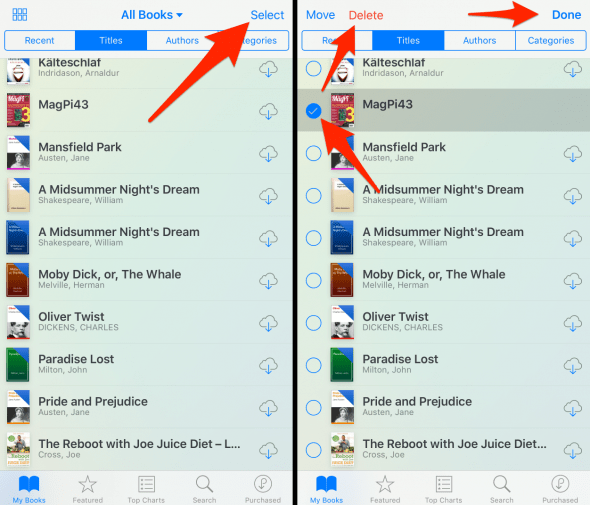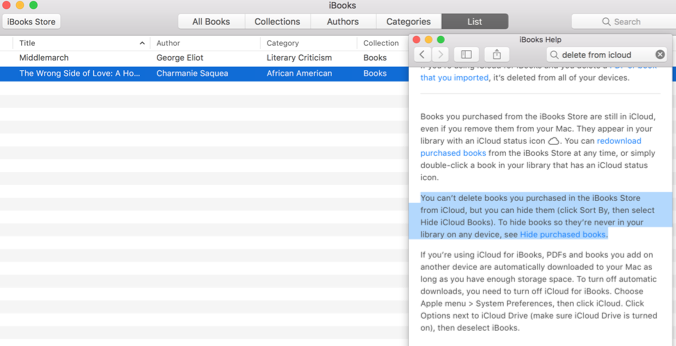

The former removes the book from your device, but leaves its cover on your shelf (with the iCloud download icon now superimposed). When you tap the thus-misnamed Delete button, its two sub-options are even less clear: Delete This Copy and Delete. First, you’re not really deleting the books at all you’re removing them. When you delete books from your bookshelf, the nomenclature in iBooks is uncharacteristically lousy.

Books in the cloud are marked with a special icon on their covers.ĭelete This Copy removes the book from your device but leaves the cover on your shelf Delete removes the book entirely. That makes it quick and painless to download books you own on demand (provided your iOS device is online, of course). Surprisingly, one significant iBooks improvement is lifted from the Kindle app: The bookshelf in iBooks now lists all the books you own, even titles you haven’t downloaded to your device. Significant and minor improvements alike make the app more satisfying a reading environment than ever before. That said, cliché though it may sound, iBooks 3 is the best edition of the app to date.

If you’re already plugged into the Kindle ecosystem, I’ll say at the outset that as good as iBooks 3 is-and it is very good-there’s really not enough to motivate you to switch allegiances from Kindle to iBooks. With Kindle, there are Kindle desktop apps for the Mac and Windows PCs, and of course the hardware Kindle devices as well. With iBooks, the only currently compatible devices are iOS devices. Kindle isn’t iBooks’ only competitor, but it’s worth mentioning one stark difference between the Kindle platform and the iBooks platform: Both can sync your place when you read ebooks between different devices. In choosing your preferred e-reading app, you’re basically choosing which ecosystem you’ll use for purchasing the ebooks themselves. Like all of its biggest competitors-Amazon’s Kindle app chief among them-iBooks is free. IBooks 3 is the latest edition of Apple’s reading app for the iPhone, iPad, and iPod touch.


 0 kommentar(er)
0 kommentar(er)
